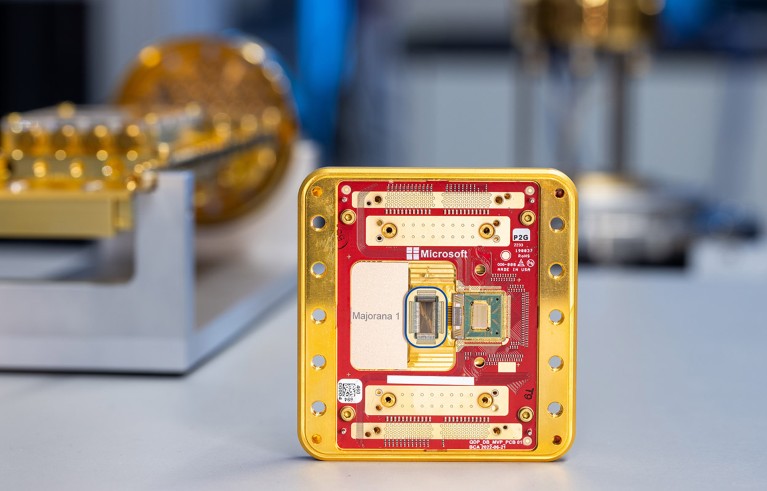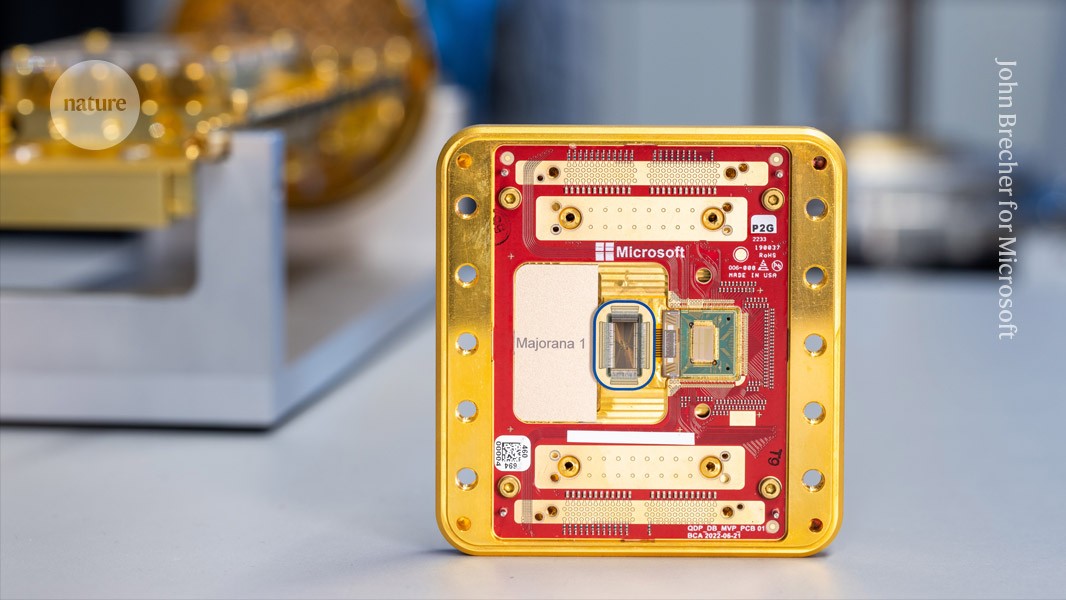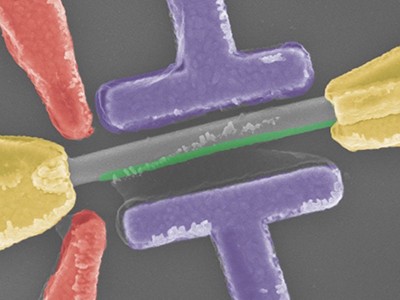
Microsoft has unveiled its Majorana 1 quantum chip.Credit: John Brecher for Microsoft
Microsoft has announced that is has created the first ‘topological qubits’ — a way of storing quantum information that the firm hopes will underpin a new generation of quantum computers. Machines based on topology promise to be easier to build at scale than competing technologies, because they should better protect the information from noise. But some researchers are sceptical about the company’s claims.
The announcement came in a 19 February press release containing few technical details, but Microsoft says it has disclosed some of its data to selected specialists in a meeting at its research centre in Santa Barbara, California. “Would I bet my life that they’re seeing what they think they’re seeing? No, but it looks pretty good,” says Steven Simon, a theoretical physicist at the University of Oxford, UK, who was briefed on the results.
At the same time, the company published intermediate results — but not the proof of the existence of topological qubits — on 19 February in Nature1.
Superconducting wire
Topological states are collective states of the electrons in a material that are robust to noise, just like two links in a chain can be shifted or rotated around each other while remaining connected.
The Nature paper describes experiments on a superconducting ‘nanowire’ device made of indium arsenide. The ultimate goal of such a device is to host two topological states called ‘Majorana’ quasiparticles, one at each end. Because electrons in a superconductor are paired, an additional electron will be unpaired and form an excited state. This electron will exist in a ‘delocalized’ state, which is shared between the two Majorana quasiparticles.
Evidence of elusive Majorana particle dies — but computing hope lives on
The paper reports measurements that detect whether the nanowire does indeed harbour an extra electron. These tests “do not, by themselves”, guarantee that the nanowire hosts two Majorana quasiparticles, the authors warn.
According to the press release, the team has now carried out follow-up experiments that paired two nanowires and put them in a superposition of two states — one with the extra electron being in the first nanowire, and the other one with the electron in the second nanowire. “We’ve built a qubit and shown that you can not only measure parity in two parallel wires, but a measurement that bridges the two wires,” says Microsoft researcher Chetan Nayak.
“There’s no slam dunk to know immediately from the experiment” that the qubits are made of topological states, says Simon. (A claim of having created Majorana states made by a Microsoft-funded team based in Delft, The Netherlands, was retracted in 2021.) The ultimate proof will come if the devices perform as expected once they are scaled up, he adds.



